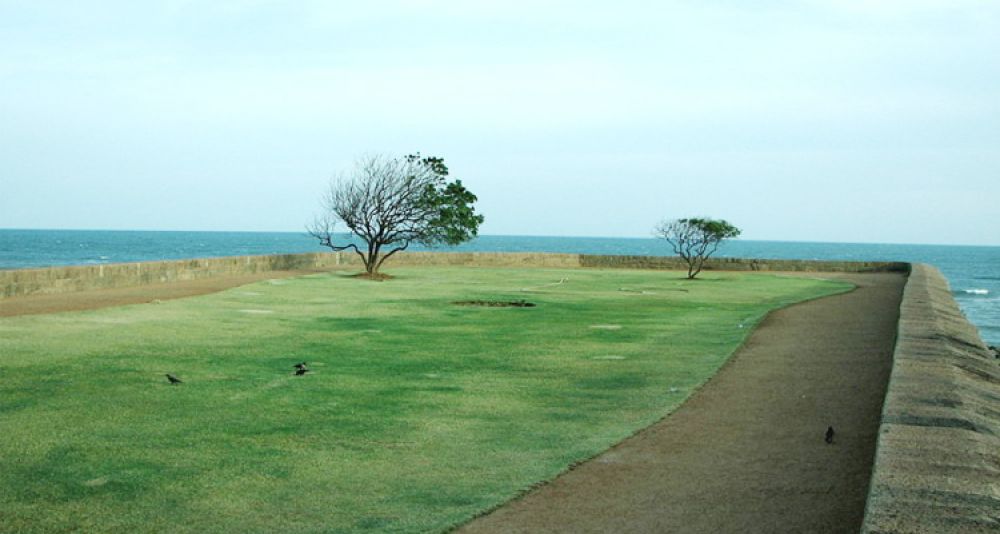

The Vattakottai Fort, positioned along the picturesque coast of Kanyakumari in Tamil Nadu, India, has been a silent witness to history and a captivating tourist destination. Originally constructed in the 18th century under the supervision of Captain Eustachius De Lannoy during the reign of the Travancore kingdom, this coastal fortification is a relic of colonial power dynamics and regional defense strategies.
The fort, whose name translates to 'circular fort' in the local language, was originally built as part of a chain of coastal fortifications. It served a strategic military purpose, guarding against naval invasions and ensuring the security of the Travancore kingdom. Built from granite blocks and laterite, Vattakottai Fort boasts a unique architectural style that combines the indigenous Dravidian techniques with colonial European design elements.
The transformation of the Vattakottai Fort into a tourist destination began post-independence when the abandoned fort was recognized for its historical and cultural significance. Over the years, it has been well-maintained by the Archaeological Survey of India, and it is now a protected site.
The fort became more accessible to tourists with the development of transportation infrastructure in the region. Focus on promoting heritage sites like the Vattakottai Fort as part of tourism packages helped highlight it as an attraction for both domestic and international tourists. The panoramic view of the sea, the tranquil surroundings, and the proximity to other tourist attractions in Kanyakumari have cemented the fort's status as a must-visit destination.
One trend that has picked up is the increasing use of technology to enhance the visitor experience. QR codes that lead to detailed information about the fort's history and architectural significance, as well as augmented reality features, are part of the latest efforts to modernize the tourist experience without detracting from the site's historical aura.
Ecotourism initiatives have also gained momentum around the region, with tours emphasizing sustainability and conservation. The lush greenery around the fort and its aquatic surroundings appeal to nature lovers and those interested in eco-friendly travels.
Additionally, the popularity of photography tourism has increased, with the fort's panoramic views and historic walls serving as a stunning backdrop for professional and amateur photographers alike.
Experience-based tourism has also grown in relevance, with tourists seeking immersive cultural experiences. Local guides now offer storytelling sessions, and there are occasional reenactments and cultural programs absorbing visitors into the historical narrative of the area.
The Tamil Nadu government has shown interest in further developing tourism in the area, with plans for conservation and infrastructure improvements aimed at enhancing the visitor experience. With these steps, Vattakottai Fort is set to remain an important cultural and historical symbol, offering a unique window into India's past and an enjoyable experience for global travelers.
In conclusion, the Vattakottai Fort is not only a testament to the architectural and historical heritage of Tamil Nadu but also a continually evolving tourist destination offering a blend of the old with the new. As tourism trends evolve, so does the story of Vattakottai, enticing travelers with its enduring charm and serene beauty.